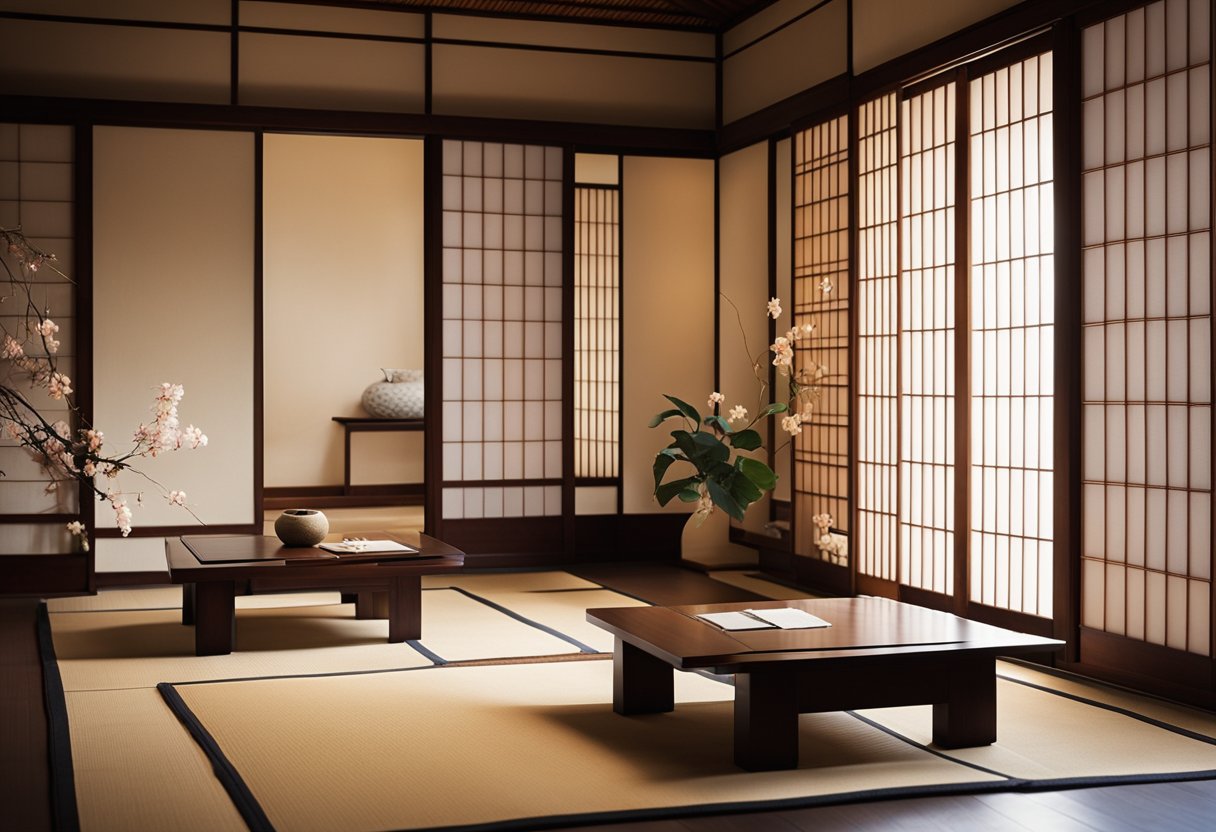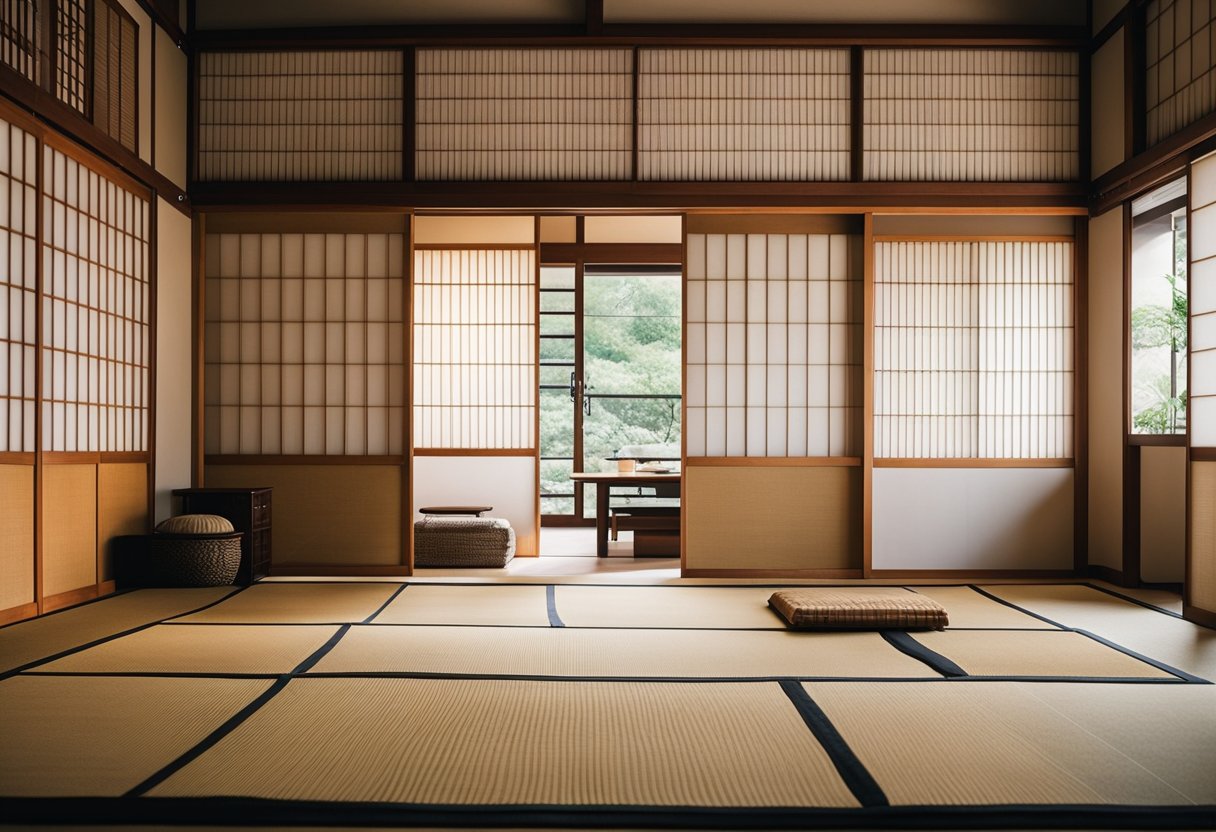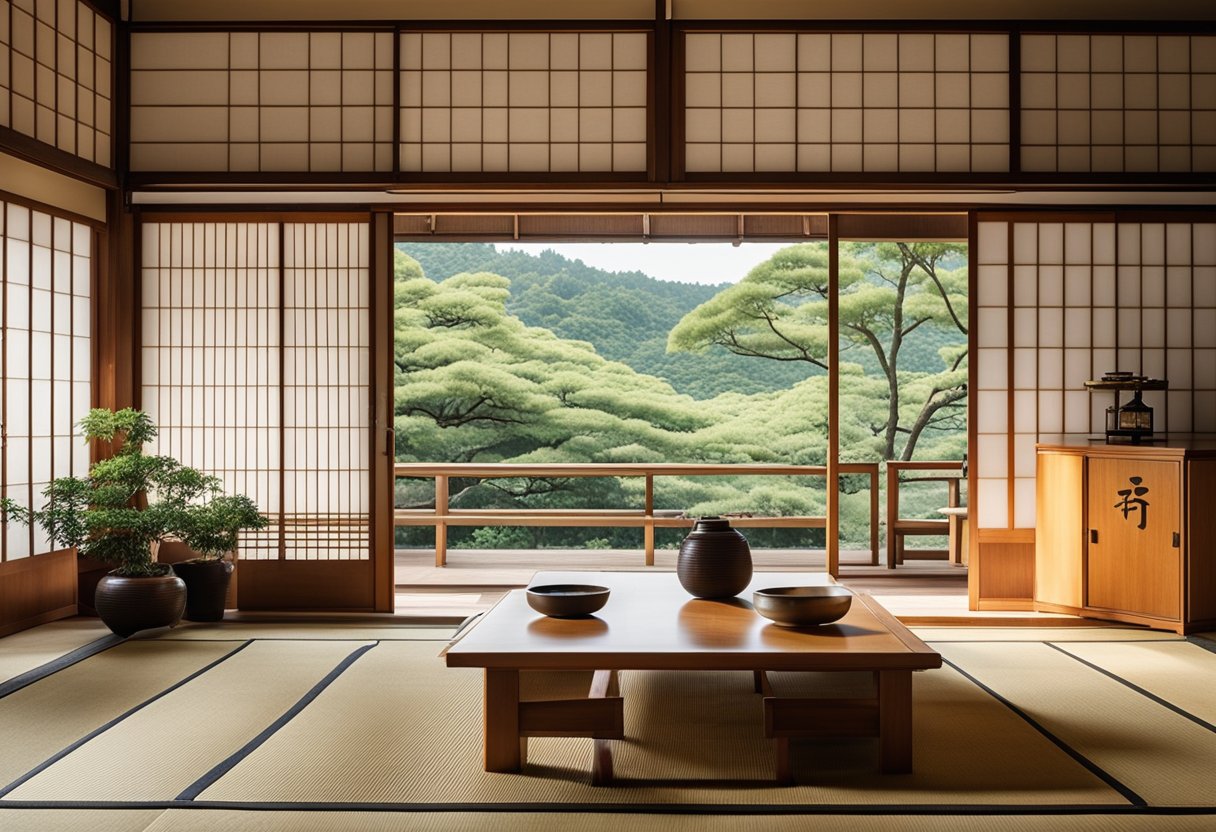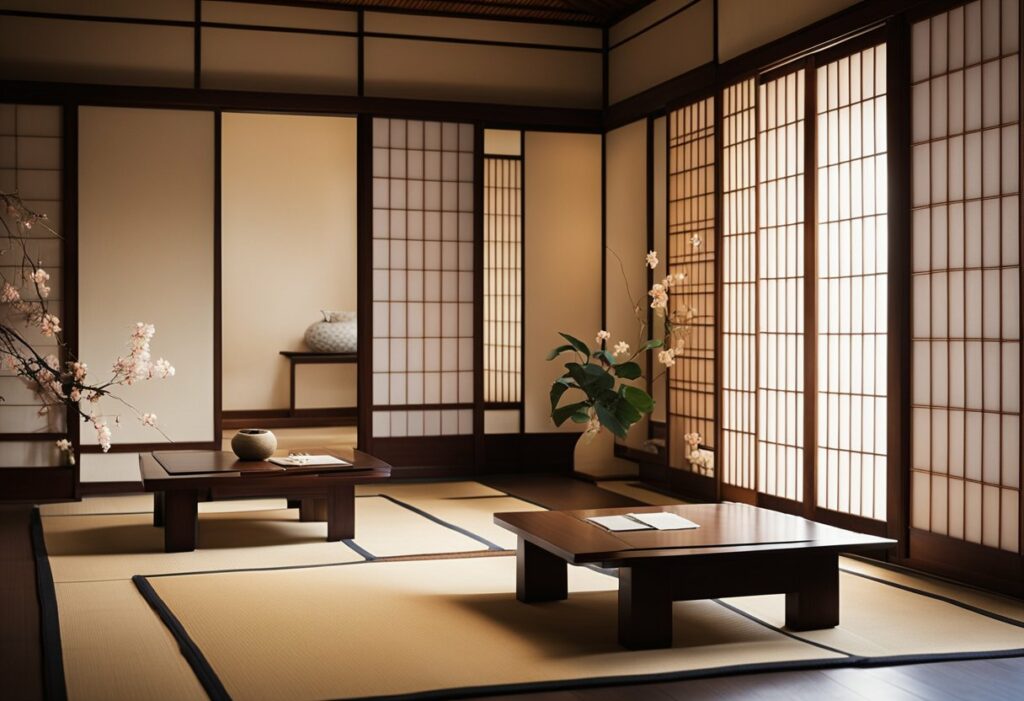Traditional Japanese Interior Design: Embracing Simplicity and Harmony
Traditional Japanese interior design is a highly sought-after style that has been around for centuries. It is known for its simplicity, harmony, and use of natural materials. This style has been passed down from generation to generation and remains a popular choice for homeowners and designers alike.

One of the fundamentals of traditional Japanese interior design is the concept of Ma, which means “gap” or “pause” in Japanese. This refers to the space between objects, and how it is just as important as the objects themselves. Ma is used to create a sense of balance and harmony in the space, and it is one of the key elements that sets Japanese design apart from other styles.
Design elements and aesthetics are also important in traditional Japanese interior design. Natural materials such as wood, bamboo, and paper are often used, as well as neutral colours such as beige, grey, and white. The use of natural light is also important, with large windows and sliding doors allowing for an abundance of natural light to flood the space. Overall, traditional Japanese interior design is all about creating a space that is both functional and beautiful, while also promoting a sense of calm and tranquillity.
Key Takeaways
- Traditional Japanese interior design is known for its simplicity, harmony, and use of natural materials.
- The concept of Ma, or the space between objects, is a fundamental element of Japanese design.
- Natural materials, neutral colours, and the use of natural light are key design elements in traditional Japanese interior design.
Fundamentals of Traditional Japanese Interior Design

If you’re looking to incorporate traditional Japanese interior design into your home, there are a few key concepts that you should keep in mind. From the use of natural materials to the importance of simplicity, traditional Japanese interior design is all about creating a space that is harmonious and connected to nature.
Influence of Nature and Simplicity
One of the most important aspects of traditional Japanese interior design is the connection to nature. Japanese interiors often feature natural materials like wood, stone, and bamboo, as well as tatami mats and shoji screens that allow natural light to filter into the space. The minimalist aesthetic of Japanese design also emphasises clean lines and uncluttered spaces, making it the perfect choice for those who want to embrace the decluttering trend.
Essential Elements and Materials
When it comes to traditional Japanese interior design, there are a few essential elements and materials that you should consider. For example, shoji screens are a common feature in Japanese homes, and they can be used to create a sense of privacy and intimacy. Paper is also a popular material in Japanese design, and it is often used to create lanterns and other decorative items.
Spatial Concepts and Minimalism
Another important aspect of traditional Japanese interior design is the use of spatial concepts and minimalism. Japanese interiors are known for their clean lines and uncluttered spaces, which creates a sense of calm and tranquillity. This is achieved through the use of natural materials, such as wood and stone, as well as the careful placement of furniture and decor.
Cultural Significance
Traditional Japanese interior design is deeply rooted in Japanese culture and history. From the tea ceremony to the concept of wabi-sabi, Japanese design is all about embracing simplicity and finding beauty in imperfection. If you’re interested in Japanese design, it’s worth taking the time to learn more about the cultural significance behind it.
Architectural Features
Finally, it’s worth noting that traditional Japanese interior design is often closely tied to Japanese architecture. From the sliding doors and beams of a traditional Japanese house to the Kyoto machiya and minka, Japanese architecture is all about creating a sense of harmony between the natural world and the built environment. By incorporating elements of Japanese architecture into your home, you can create a space that is truly unique and deeply connected to nature.
Overall, traditional Japanese interior design is a beautiful and timeless style that is well worth exploring. Whether you’re interested in the minimalist aesthetic of Japandi style or the cultural significance of the tea ceremony, there is something for everyone in this rich and fascinating design tradition.
Design Elements and Aesthetics

If you’re interested in traditional Japanese interior design, it’s important to understand the key design elements and aesthetics that make it unique. From the use of natural materials to the integration of modern design, there are many aspects to consider.
Colour and Texture
One of the most striking features of traditional Japanese-style rooms is their neutral color palette. This is because Japanese designers aim to create a sense of harmony with nature, and neutral colors help to achieve this. You’ll often see shades of beige, white, and grey used in traditional Japanese interiors.
Texture is also an important element in Japanese interior design. Natural materials such as wood, bamboo, and paper are commonly used to create a sense of warmth and texture in a space. Wabi-sabi, the Japanese concept of finding beauty in imperfection, is also often seen in traditional Japanese interiors.
Functional Beauty and Versatility
Another key aspect of Japanese interior design is the concept of functional beauty. Japanese designers aim to create spaces that are both beautiful and practical. For example, futons are often used in traditional Japanese bedrooms because they can be easily rolled up and stored away during the day, making the space more versatile.
Privacy is also an important consideration in Japanese interior design. Rooms are often separated by sliding doors or screens, allowing for privacy when needed. Views are also carefully considered, with windows often placed to frame a particular view or feature.
Integrating Modern with Traditional
While traditional Japanese interior design is steeped in history and tradition, modern designers and architects are finding ways to integrate these elements with contemporary design. Japandi design, which combines Japanese and Scandinavian design principles, is becoming increasingly popular. This style embraces minimalism and clean lines, while still incorporating natural materials and a neutral color palette.
Overall, traditional Japanese interior design is a beautiful and functional way to create a sense of harmony and tranquillity in your home. By understanding the key design elements and aesthetics, you can create a space that is both practical and beautiful.
Frequently Asked Questions

How can one infuse their living space with the charm of a traditional Japanese interior?
Infusing your living space with the charm of a traditional Japanese interior involves incorporating the key elements of Japanese design into your decor. This includes using natural materials such as wood, bamboo, and rice paper, as well as incorporating traditional Japanese furniture such as tatami mats and shoji screens. Additionally, a minimalist approach to furniture and decor can help create a calming and serene atmosphere.
What are the defining elements that characterise a quintessential Japanese-style interior?
A quintessential Japanese-style interior is characterised by simplicity, minimalism, and a connection to nature. This includes the use of natural materials, such as wood and bamboo, as well as a neutral colour palette. Traditional Japanese furniture, such as low platform beds and tatami mats, are also key elements of this design style.
Which design principles are central to creating a minimalist interior inspired by Japanese aesthetics?
Creating a minimalist interior inspired by Japanese aesthetics involves incorporating the principles of wabi-sabi, which emphasises the beauty of imperfection and simplicity. This involves using natural materials, such as wood and stone, and a neutral colour palette. Additionally, a minimalist approach to furniture and decor can help create a calming and serene atmosphere.
Could you delve into the history and evolution of Japan’s distinctive interior design?
Japan’s distinctive interior design has evolved over centuries, influenced by factors such as religion, culture, and geography. Traditional Japanese interiors were characterised by the use of natural materials and a minimalist approach to furniture and decor. Over time, Japanese design has evolved to include elements of Western design, resulting in a unique fusion of styles.
What is the name given to a classic, multi-functional Japanese room?
A classic, multi-functional Japanese room is known as a “washitsu”. This type of room typically features tatami mats and shoji screens, and can be used for a variety of purposes, such as sleeping, dining, and entertaining.
How does modern design integrate with traditional Japanese interior aesthetics for a contemporary look?
Modern design can integrate with traditional Japanese interior aesthetics by incorporating elements of Japanese design, such as the use of natural materials and a minimalist approach to furniture and decor. Additionally, modern Japanese design often incorporates elements of Western design, resulting in a unique fusion of styles that is both contemporary and timeless.



